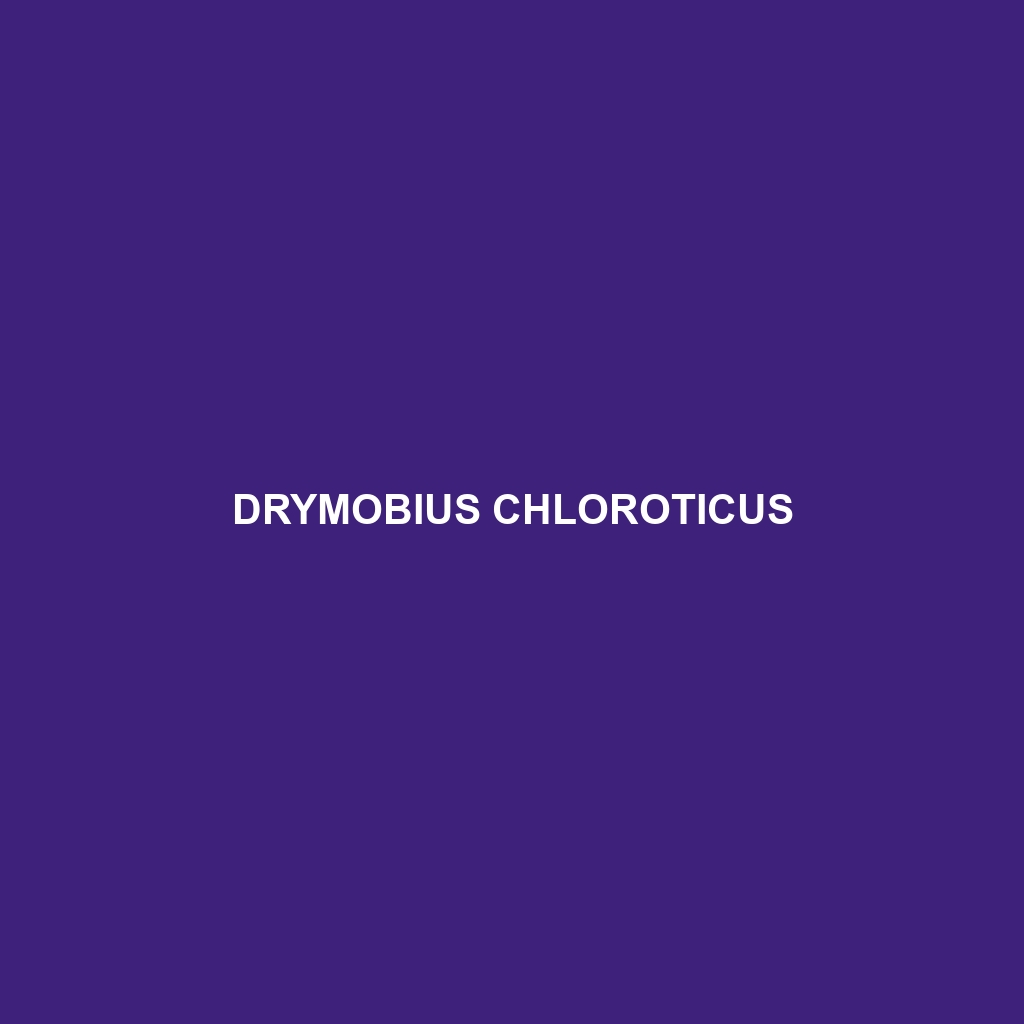Common Name
Drymobius chloroticus
Scientific Name
Drymobius chloroticus
Habitat
Drymobius chloroticus, commonly known as the Green Snake, is primarily found in the lush, tropical rainforests of Central and South America, particularly in regions such as Costa Rica and Panama. These serpents thrive in areas with ample vegetation, where they can easily blend with the surrounding foliage. They prefer humid environments, often inhabiting lowland forest areas and savannas, characterized by warm temperatures and abundant rainfall. The presence of a diverse ecosystem, including numerous tree species and understory plants, plays a critical role in supporting the life cycle of Drymobius chloroticus.
Physical Characteristics
The Drymobius chloroticus is a slender, non-venomous snake that can reach lengths of up to 1.5 meters (approximately 5 feet). Its striking coloration is typically bright green, providing excellent camouflage among leaves and branches in its rainforest habitat. The scales are smooth, and the snake has a distinctly elongated body, tapering towards the tail. Notable features include large, bright yellow eyes, which enhance its ability to see in low-light conditions, making it adept at foraging during the twilight hours. This vibrant appearance and slim physique set Drymobius chloroticus apart from other snake species in its range.
Behavior
Drymobius chloroticus exhibits primarily diurnal behavior, being most active during the daytime. This species is an adept climber, often found foraging in the trees and shrubs. While it displays solitary habits, it has been known to interact during the mating season, engaging in intricate courtship displays. During mating rituals, males may engage in combat to assert dominance, showcasing their strength and agility. Drymobius chloroticus also possesses a defensive behavior, often remaining motionless and camouflaged to avoid predation. Its ability to swiftly escape to higher branches makes it a notorious escape artist in the wild.
Diet
The diet of Drymobius chloroticus is primarily carnivorous, feeding on various small prey, including lizards, frogs, and insects. Its hunting technique relies on stealth and ambush tactics, allowing it to capture unsuspecting prey in a swift strike. The snake’s agile body enables it to navigate through dense foliage in pursuit of food, demonstrating excellent adaptability in diverse habitats. The feeding patterns of Drymobius chloroticus are generally opportunistic, making it an effective predator in its ecosystem.
Reproduction
The reproductive cycle of the Drymobius chloroticus typically occurs during the wet season when environmental conditions are favorable for offspring survival. Mating takes place in the spring, with females laying between 4 to 15 eggs in concealed, moist environments to provide optimal conditions for hatching. The gestation period can last around 60 days, after which hatchlings emerge, measuring approximately 20 to 30 centimeters long. Parental care is minimal, as young snakes must immediately fend for themselves. This natural cycle is crucial for maintaining population dynamics within their habitat.
Conservation Status
Currently, Drymobius chloroticus is listed as Least Concern by the International Union for Conservation of Nature (IUCN). However, habitat destruction due to deforestation and land development poses significant challenges to its population. Conservation efforts aim to preserve its natural habitat through the establishment of protected areas and promoting sustainable land-use practices. Monitoring population trends and conducting ecological research remains vital to ensure the future of this resilient species within its native range.
Interesting Facts
One intriguing fact about Drymobius chloroticus is its remarkable ability to mimic the coloration of certain venomous snakes, a defensive adaptation that provides it with an extra layer of protection against potential predators. Additionally, this species is known for its unique hunting strategy, which includes a method of constriction when capturing larger prey, showcasing its versatility as a predator. The Green Snake is also often sought after in the exotic pet trade due to its docile nature and striking appearance.
Role in Ecosystem
Drymobius chloroticus plays a vital ecological role as both a predator and prey species, contributing to the balance of its ecosystem. As a predator, it helps regulate populations of insects, lizards, and other small animals, promoting biodiversity. Furthermore, it serves as food for larger predators, including birds of prey and larger mammals, maintaining the complex food web within rainforest habitats. By controlling these species, Drymobius chloroticus contributes to the overall health of the rainforest ecosystem, underscoring its importance as an integral part of its environmental community.
